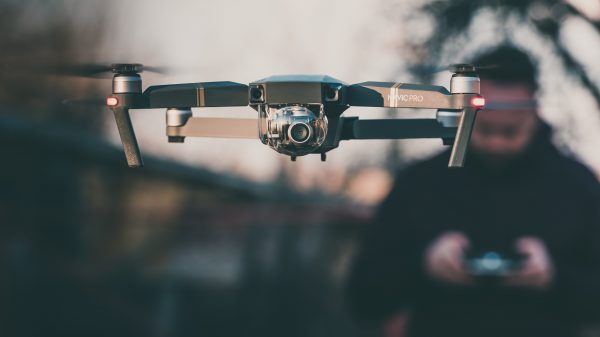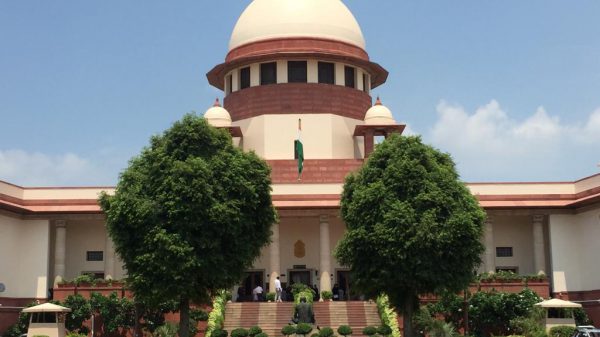In the aftermath of a suspected drone attack in Jammu, the draft regulations mandate safety features like tracking beacons, restrict imports, and segregate the air space into colour-coded zones.
Relaxing several existing rules, the Ministry of Civil Aviation (MoCA) on Thursday issued the draft Drone Rules, 2021, seeking public consultation before notifying them to replace the Unmanned Aircraft System (UAS) Rules issued in March this year.
Why it matters? : A few weeks ago drones were suspected to have been used in an attack on an Indian Air Force base in Jammu Airport making it the first instance of a UAV attack on the country’s territory. After that, the Prime Minister along with officials from several key ministries such as the Ministry of Civil Aviation went into a huddle to discuss security measures as well as a review of the existing drone regulations. In the meeting, officials of MoCA presented a proposal for new drone regulations, and as reported before by MediaNama, this present draft comes after incorporating the suggestions made by the Prime Minister.
The previous UAS Rules was notified in March, and it has introduced several layers of operational complexities for the drone industry. It mandated features such as —
- Multi-level licensing and fee system for every drone-related activity
- Penalties for non-compliance did not have any cap and so on
There was criticism from the drone industry regarding the UAS Rules. For instance, as previously reported by MediaNama, the industry body Drone Federation of India had suggested that the components used for manufacturing drones should not be regulated under the proposed drone rules as it can be “detrimental to the progress of the drone industry”.
The MoCA is inviting comments on the Drone Rules 2021. It said that the suggestions or objections should be mailed to sdit.div–moca@gov.in with the subject line: “Suggestions for draft Drone Rules, 2021”.
Quality Council of India to certify drones
In general, the MoCA said that no person shall operate a drone unless it conformed to the ‘Certificate of Airworthiness’ or is exempted from the requirement of the same. It is the Quality Council of India which will provide the certification on an application filed by the manufacturer on the Digital Sky platform. The Central government will set the standards for obtaining the certificate.
Procedure for application: The draft rules state that any manufacturer or importer will have to provide details of their —
- Name, contact details
- Drone details
- Proof of payment
- Drone should be physically handed to certification entity
Restriction on import: The Drone Rules 2021 said that the import of drones and components shall be regulated by the Directorate General of Foreign Trade. On the other hand, the QCI will certify these imported drones based on approvals granted to these drones by international aviation regulators.
Mandatory safety features: Based on the notifications set by Indian government every drone should have to adopt the following safety features —
- No Permission – No Takeoff’ (NPNT) hardware and firmware;
- Real-time tracking beacon that communicates the drone’s location, altitude, speed and unique identification number; and
- Geo-fencing capability
A six-month lead time has been provided for compliance.
Exemptions: The mentioned “Certificate of Airworthiness” will not be required for —
- Drones for the purpose of research and development
- Drones for obtaining the mentioned certificate
- Nano drones
Unique Identification number needed for drone registration
The draft rules said that no one can operate a drone without the UIN which can be generated by providing details on the Digital Sky platform. The UIN will be linked to the unique serial number provided by the manufacturer of the drones and the unique serial number of its flight control module and ground control station.
Registration and deregistration: The draft rules said that a person can transfer a drone to another person by providing the details of the transferor, transferee, and UIN number of the drone on the Digital Sky platform. For deregistering a drone, a person owning a drone, on arriving at a reasonable conclusion that a drone registered in the person’s name is either permanently lost or permanently damaged, shall apply for the deregistration by submitting an application in Form D-3 on the Digital Sky platform.
Drone operations
With respect to drone operations, the draft rules require the inclusion of various maps, pre-flight verification of zonal restrictions, need for access to data, and so on.
What is Pre-Flight verification? Before commencing a drone operation, the rules mandate a drone pilot to verify the Digital Sky platform for any notification or restriction applicable to drone operations in the intended area of operation.
In terms of access to data, the rules said that all State Governments, Union Territory Administrations, and law enforcement agencies will be provided direct access to the data available on the Digital Sky platform.
Airspace and interactive map – The Indian government will publish an airspace map for drone operations which will segregate the airspace into red (flying not permitted), yellow (controlled airspace) and green (fly zones) zones. Apart from that, the map will be made interactive with the help of APIs so that pilots can integrate their flight plans and so on. As per the draft rules, the yellow zone has been reduced from 45 km to 12 km from the airport perimeter.
Red zone can be temporarily established: Based on the necessity, a State Government, Union Territory Administration or law enforcement agency can declare a temporary red zone over a specified area for a period not exceeding 48 hours at a time, by notifying it through the Digital Sky platform and highlighting it on the airspace map.
Research and development
The rules said that the following persons shall not require a certificate of airworthiness, unique identification number, prior permission, and remote pilot licence for operating drones for research and development purposes –
- Research and development entities under the administrative control of, or recognised by the Central Government, State Governments or Union Territory Administrations;
- Educational institutions under the administrative control of, or recognised by the Central Government, State Governments or Union Territory Administrations;
- Startups recognised by Department for Promotion of Industry and Internal Trade; and
- Any drone manufacturer having a Goods and Service Tax Identification
Promotion of drone industry
The draft rules propose the adoption and promotion of the drone industry with the help of a Drone Promotion Council which shall be entrusted with —
- Development of a business-friendly regulatory regime, including automated permissions;
- Establishment of incubators and other facilities for the development of drone technologies;
- Involvement of industry experts and academic institutions in policy advice; and
- Organising of competitive events involving drones and counter-drone technologies.
The rules said that the Indian government will evaluate these rules on the basis of economic impact which shall be documented in a half-yearly report that will list the achievements of the Indian drone sector and the measures taken to further the ease of doing business in the sector.
Other takeaways from the Draft Drone Rules
- Many approvals such as the unique authorisation number, unique prototype identification number, certificate of conformance, remote pilot instructor authorisation, and drone port authorisation have been abolished.
- Drone registration fee reduced to nominal levels. No linkage with the size of the drone.
- No flight permission is required up to 400 feet in green zones and up to 200 feet in the area between 8 and 12 km from the airport perimeter.
- No pilot licence is required for micro drones (for non-commercial use), nano drones, and for R&D organisations.
- No restriction on drone operations by foreign-owned companies registered in India.
- No security clearance is required before any registration or licence issuance.
- Coverage of drones under Drone Rules, 2021 increased from 300 kg to 500 kg. This will cover drone taxis too.
- All drone training and testing are proposed to be carried out by an authorised drone school. The DGCA shall prescribe training requirements, oversee drone schools and provide pilot licences online.
- Standard operating procedures (SOP) and training procedure manuals (TPM) will be prescribed by DGCA on the Digital Sky platform for self-monitoring by users. No approvals are required by the DGCA unless there is a significant departure from the prescribed procedures.
- The maximum penalty under Drone Rules, 2021 reduced to INR 1 lakh. This shall, however, not apply to penalties in respect to violation of other laws.
- Drone corridors will be developed for cargo deliveries.
Also read:
- Targeted procurement, outsourcing, AI/ML: How Survey of India is planning digital mapping of villages using drones
- Vodafone Idea is entering India’s drone ecosystem
- DGCA has permitted at least 10 entities to pilot remote drone surveillance, delivery
- Drones surveilling Amritsar could detect distance between humans and send GPS coordinates of lockdown violators to police
- Inside the deployment of drones in Mumbai to contain COVID-19
- Govt agencies can now legally deploy drones for COVID-19 surveillance























